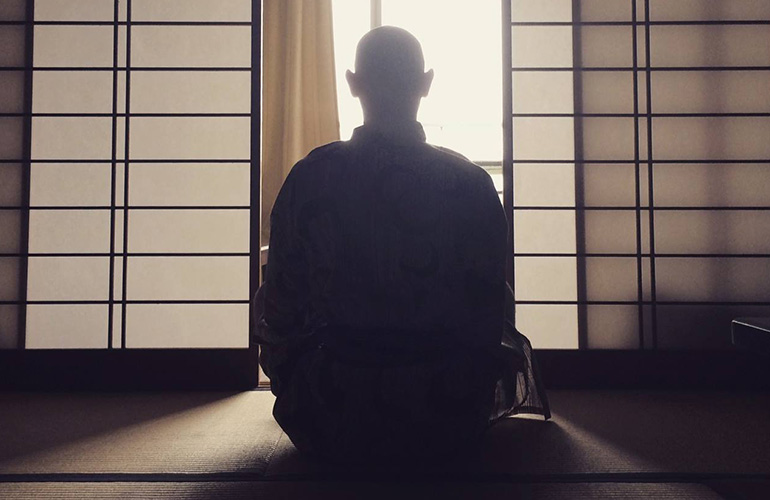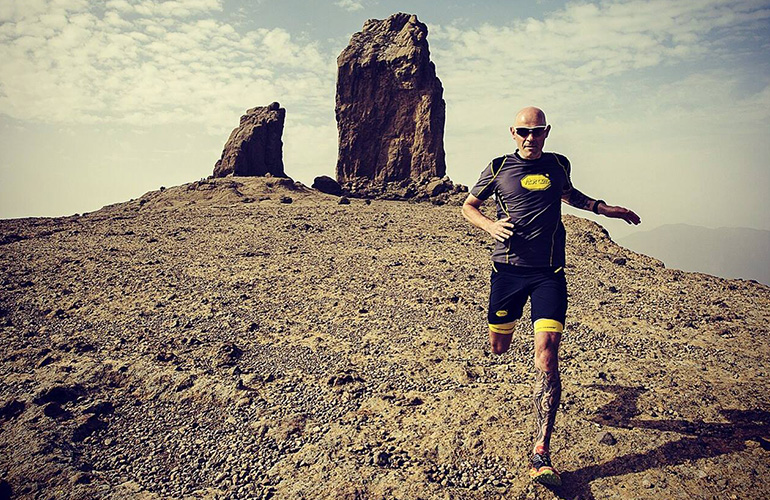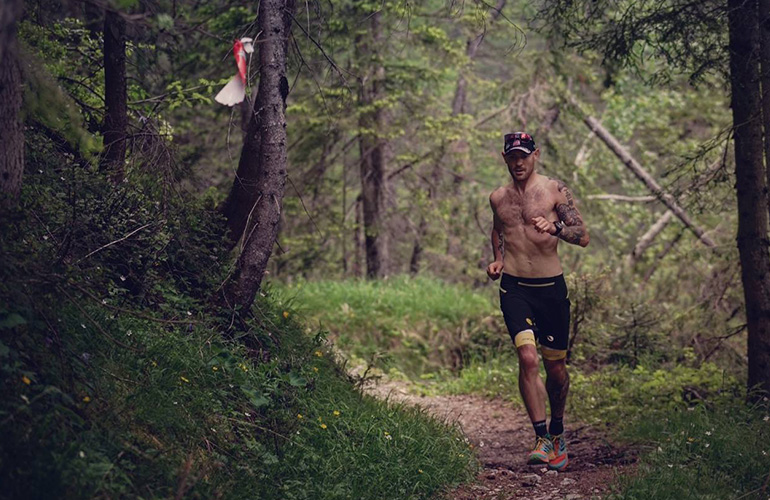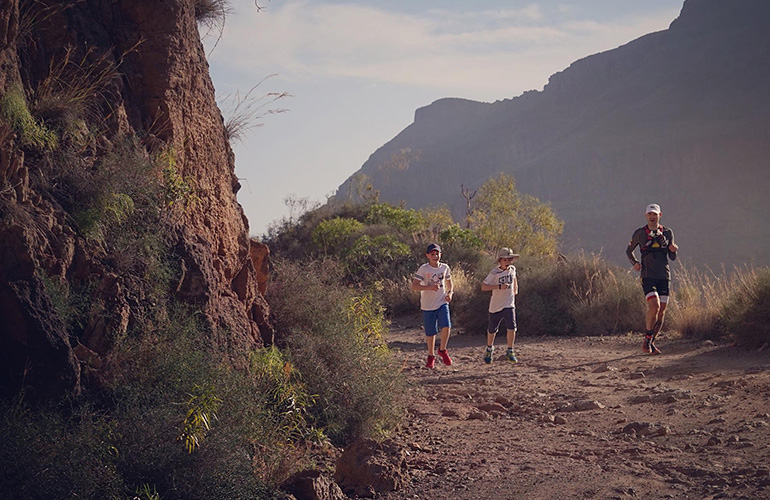Gediminas Grinius won silver at this year’s 170 km (105 mile) Ultra Trail du Mont Blanc – UTMB, one of the world’s premier ultra marathons. His secret? It’s staying relaxed and finding his inner warrior. 
Gediminas finding his inner samurai before an ultra marathon in Japan. © Gediminas Grinius
Lithuanian ultrarunner Gediminas Grinius is riding a high after an outstanding performance at UTMB in France. Winning silver tastes especially sweet because in last year’s race he pulled out due to injury.
“Before this year’s race I felt very good, the best shape ever,” he says. “My preparation was excellent.”
Here are Gediminas’s tips for the different phases of an ultra marathon.
Race day morning
It’s easy to feel pressure and stress before a race begins. It’s important to do what you need to do to stay calm. The best way to do that is to stick to your routine, rather than adjusting it for others. I like to spend time with my family, just enjoying life, before a race begins.

© Gediminas Grinius
The start
The beginning of a race is often very fast and chaotic. Later in the race, many runners that started too fast are dead. It’s important to be patient, to keep calm and follow your own pace. Don’t try to keep up with other runners. The race is long so it’s good to keep reserves for later. Now it’s time to relax and enjoy the race.
It’s also important to begin and maintain your nutrition routine, whether you measure it by aid stations or by time.
“Pain is temporary, glory lasts forever.”
Settling in
As the race settles down, my plan is to stick to other runners, following their pace because together we’re stronger. It helps me to feel stronger and I can push more from that place.
I’m not a good runner in the beginning. The first 30 or 40 km I’m warming up. After that I know how the race will be because I can feel how my body is reacting. If my body lets me go at a good pace, then I go with that. If it’s not my day, then I go with that, and back off.
© Gediminas Grinius
The suffering
Eventually you reach a point when you are suffering. It’s impossible to avoid. You know it’s going to happen. You must be patient. I always remind myself, “pain is temporary and glory is forever”. If you’re suffering, remember it will pass.
When I’m struggling, I use a mental technique. For example, when I was in Japan competing in the Ultra-Trail Mt Fuji, I imagined I was a samurai warrior fighting bad guys. It’s a kind of mental game to cope with difficulties. I visualise myself as different characters.
© Gediminas Grinius
“As a father, I remember I’m setting a good example to my children – to finish whatever you start.”
Ending strong
During the final stage, I’m thinking about things that generate positive emotions. For example, I think about my family and how grateful I am they supported me during the long night of the race. It gives me some push and I can move faster. It’s about cultivating good vibes. I know I will feel so much when I see them. As a father, I remember I’m setting a good example to my children – to finish whatever you start. My kids see how stubborn I am and that I do what I love. It’s a good lesson for them.
Follow Gediminas's adventures on his Facebook page.
Other stories with Gediminas Grinius:
Tips for transitioning from road to trail
The Gediminas way of recovery
Main image: © Gediminas Grinius